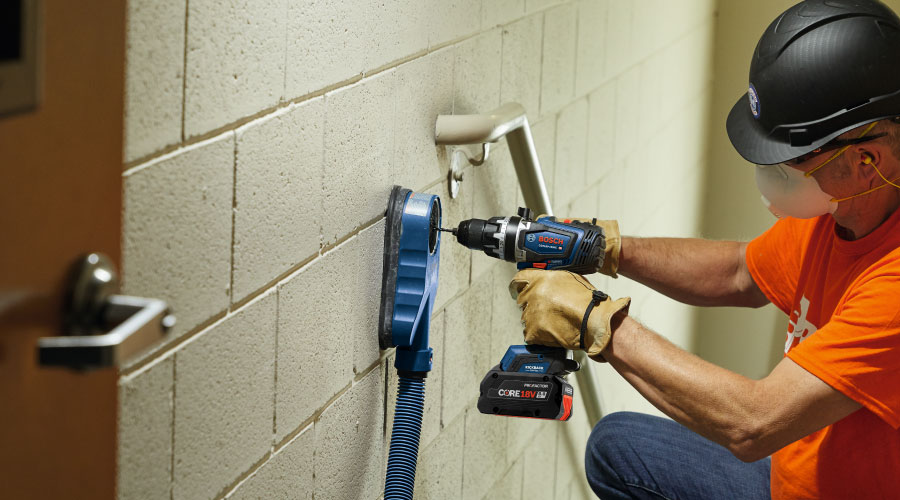Building Internet of Things: Myths and Facts
Debunking and clarifying myths and misconceptions about the Building Internet of Things is essential to managers making smart, informed decisions.
Myth #1: Facilities must have wireless networks available.
This myth is sometimes fueled by a misconception that BIoT depends on cell phone technology. Smartphones might play a role in providing data, as well as in acting as a portal for accessing data. But they do not drive the technology, nor is the BIoT framework built around mobile-phone technology.
The benefit of the BIoT is the ability to collect, share and analyze information in ways that help managers draw meaningful conclusions and take informed action on the basis of that analysis. Devices and systems rely on the ability to connect at some level, and that connection might be through wired or wireless means, but the ability to be wireless is certainly not a limiting factor.
Myth #2: BIoT devices can and will work together through one portal or platform.
Facilities do not need to use a single portal or platform. Instead, much work is being done with standards — including data-exchange standards — that will allow programs and devices to communicate easily with one another. Data-exchange standards developed or in development by the building SMART alliance’s National Building Information Modeling Standard include:
• Construction Operations Building information exchange (COBie). This standard supports the collection of facility data to further populate computerized maintenance management systems, computer aided facility management systems, and integrated workplace management systems.
• Life Cycle information exchange (LCie). This standard addresses facility asset information.
• Building Programming information exchange (BPie). The standard focuses on architectural programming information.
• Sparkie. This standard addresses an electrical system information exchange for “components, assemblies, and connections that distribute and use electricity in a facility.”
The Open Standards Consortium for Real Estate (OSCRE) also is developing standards that would help create a common language and enable organizations to share information, yielding better opportunities for comparative analysis and business analytics.
Myth #3: BIoT will cause security breaches and put the reliability of operations at risk.
Security is a huge concern among facilities, particularly in light of data breaches by large corporations over the past few years. Connectedness does not ensure security breaches will occur, but it does introduce risk. In fact, any technology advance introduces a certain amount of risk and exposure that takes time to discover, analyze and work through.
But that should not be the reason managers do not embrace these advances. Instead, we must understand the way systems are accessed and by whom, the information that is being exchanged and modified, and the security protocols that are in place. In this way, we can manage the risk while still benefitting from data and information that only comes with improved connectivity.
Myth #4: Implementing BIoT is free or low cost and reduces the cost of operations.
The aggregation of data and information requires that organizations develop an infrastructure that is tailored to help managers achieve the goals of the organization. This undertaking costs money to implement, as well as to plan. While connecting devices and systems offer potential access to vast quantities of information, it is our ability to define desired outputs that lends targeted legitimacy to our actions.
The desired outputs define the required inputs, or the data and information we must collect. Managers then can use that information in the decision-making process, informing them of problem areas that they can address and processes they can improve. Eventually, these efforts might lead to a reduced cost of operations.
In other words, it is not BIoT itself that reduces the cost of operations. BIoT only provides a means of getting needed information in order to draw conclusions and inspire improvement. The improvements we make and the actions we take as a result of the information we draw from the BIoT framework can lead to a reduced cost of operations.
Myth #5: Implementing BIoT technology and devices will increase the productivity of facilities.
BIoT offers a way to connect systems and devices and collect from them vast quantities of data that we can use to improve the way we understand and operate facilities. It is essentially a tool or set of tools for us to use. It is facilities personnel interacting with and interpreting that data who ultimately will help increase the productivity of facilities.
As we think about BIoT and our connected world, it has become clear that we have entered a world where data analysis and data-driven decision making are essential for today’s managers. BIoT provides a framework of possibilities with enormous quantities of information, the value of which is tied to our ability to understand it and use it well. Soon enough, it will become woven into the fabric of our everyday lives.
Laurie Gilmer is vice president of facility services with Facility Engineering Associates (FEA). She leads FEA’s group in its execution of facility asset management, building energy management, and sustainability services. Gilmer co-authored the International Facility Management Association (IFMA) second manual in the Sustainability “How-To-Guide” Series, EPA’s Energy Star Portfolio Manager.
Related Topics:













